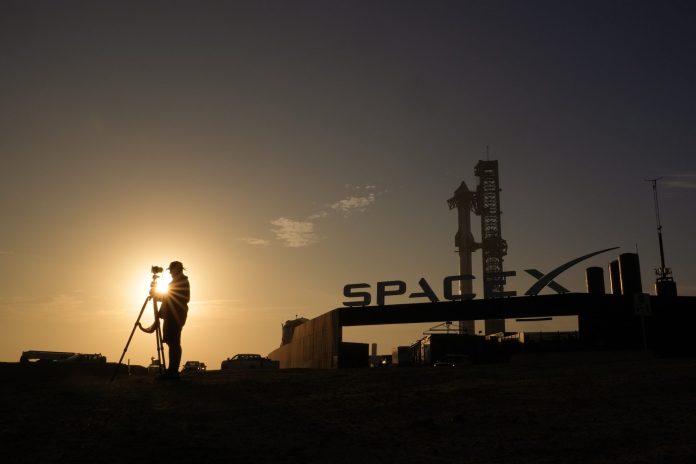
|
Only have a minute? Listen instead
Getting your Trinity Audio player ready...
|
SpaceX is planning something different with its fifth Starship orbital test flight from Boca Chica, and things could get loud.
The most recent estimate from Elon Musk, the company’s founder and CEO, is that “Flight 5” could take place late this month or early September, depending on when the Federal Aviation Administration grants the required modified launch license.
This time, instead of the Super Heavy booster rocket falling or landing in the Gulf, whole or in pieces, the fifth test will attempt to retrieve the booster by setting it down on the launch pad at Boca Chica, using huge mechanized arms on the pad’s integration/launch tower to grab it on its way down.
There’s a good chance this won’t succeed. Nevertheless, SpaceX communications office announced in a statement Monday afternoon that the next flight “will potentially be a major step in our effort towards building a rapidly reusable rocket.”
“A primary goal will be flying the Super Heavy booster back to the launch site and catching it,” the company said. “In addition to being a pretty spectacular visual for residents in Cameron County, the rocket’s return will be accompanied by a sonic boom. We’re spreading awareness of the potential for residents to hear the boom and appreciate the work your organizations do to keep the community informed.”
A sonic boom, like a condensed thunderclap, is the noise made by the shock wave produced by a flying object moving faster than the speed of sound, or Mach 1, about 761 mph at sea level on a “standard day,” according to NASA.
“The booster will slow down from supersonic speeds, resulting in audible sonic booms in the area around the return location approximately seven to nine minutes after launch,” SpaceX said.
The company noted that it has landed its family of Falcon rockets more than 330 times, producing sonic booms each time.
However, the company said the 233-foot-tall Super Heavy is expected to produce a more intense sonic boom than those made by its Falcon 9 and Falcon Heavy rockets.
“Data gathered from the first ever Super Heavy landing burn and splashdown in the Gulf of Mexico on Starship’s fourth flight test indicates Super Heavy’s sonic boom will be more powerful than those generated by Falcon landings,” SpaceX said.
“Residents in the surrounding area may hear one or more sonic booms during the landing attempt, although what residents’ experience will depend on distance from the launch site, weather conditions and other factors.”
SpaceX said it will release more information about the next flight “once we’re closer to launch,” and that the launch date is pending regulatory approval.



